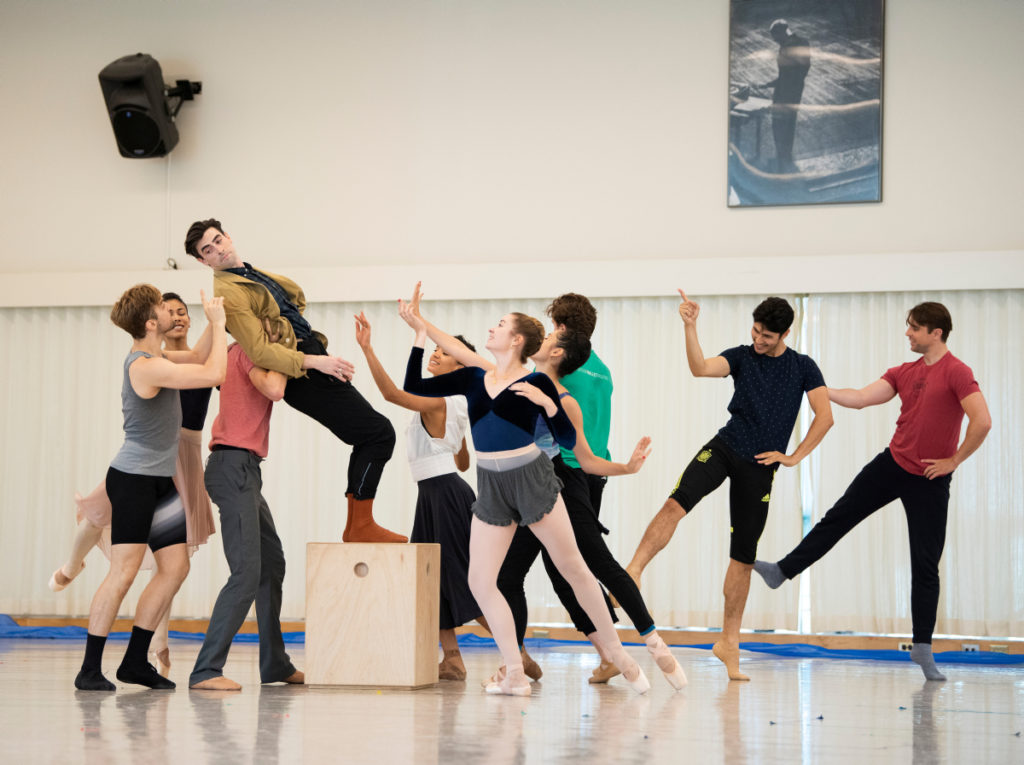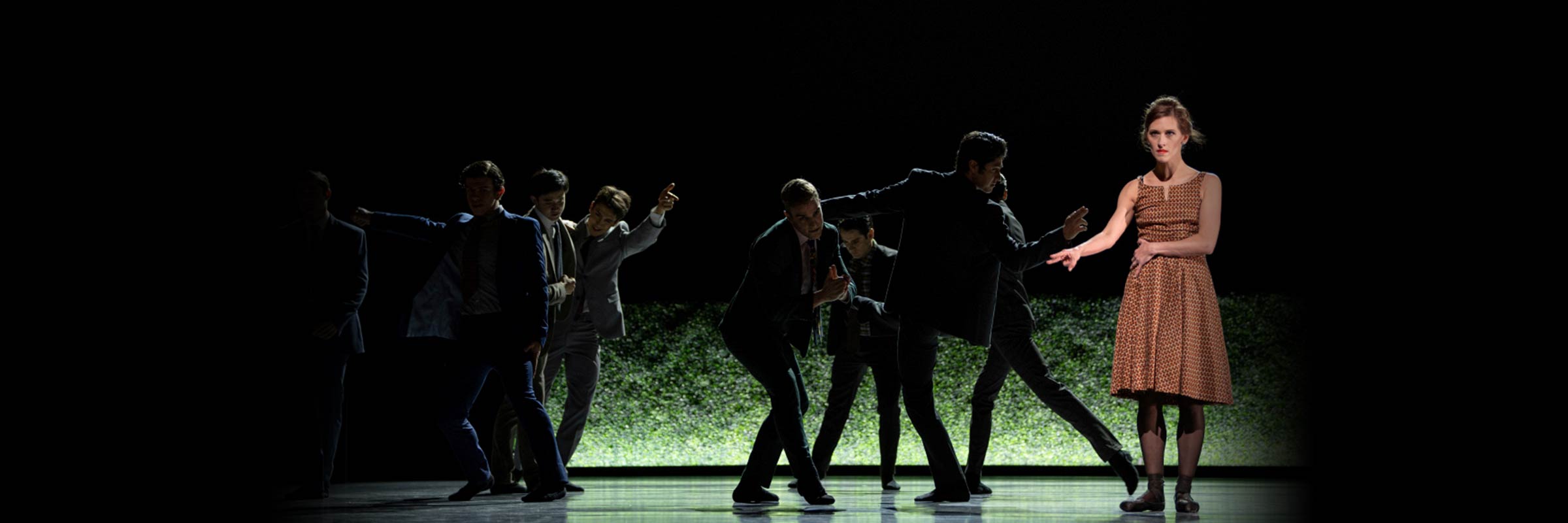Instant Expert: Mrs. Robinson
Movement Motifs in Cathy Marston’s Latest World Premiere
In a traditional story ballet, you’ll see three kinds of movement: classical ballet, usually performed by the main characters; character dances, usually performed by the corps de ballet; and mime, used to move the story forward. But in contemporary narrative ballets, these types of dance aren’t so clearly delineated. In fact, a choreographer may not use any of the three, but rather blend aspects of ballet, mime, and contemporary dance to tell a story.
Cathy Marston works this way, using words and images to inspire the movement, and then using movement—not mime—to propel the story forward. In Mrs. Robinson, she makes use of a variety of recurrent movement motifs to tell you something about the characters in the story. Invisible martinis are shaken, imaginary cigarettes are smoked, and pretend dishes are washed, all giving insight into the characters’ personalities and the world in which they live.

One memorable movement motif is what she calls “a little fishy move.” Inspired by a scene in The Graduate when Benjamin sits in front of a fish tank, the dancers embed a little fish-like swivel in their disco moves—“The Swim,” anyone? And it’s not just a dance move. It also suggests something true about the characters’ lives: that women in 1960s America were, in a way, stuck in a fishbowl. They were able to see out, but were stuck swimming in circles. Mrs. Robinson then, with her cigarettes and martinis and younger men, is maybe just looking for a way out of her pretty glass bowl.
THIS PRODUCTION WAS PART OF THE 2022 SEASON
Header Image: Sarah Van Patten in Marston’s Mrs. Robinson // © Erik Tomasson








